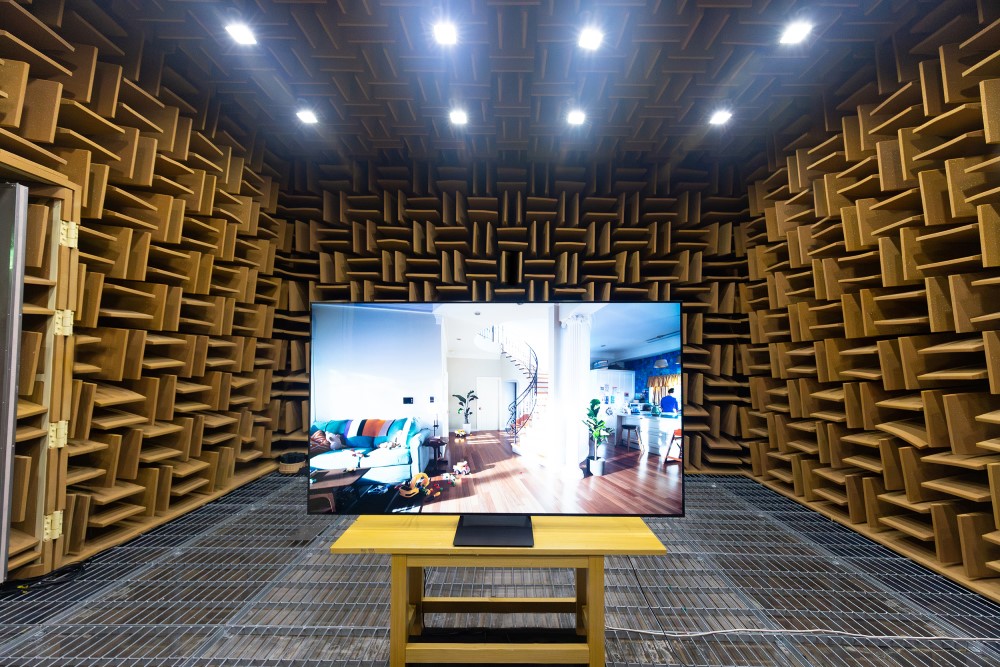Sound has the ability to change how we perceive visual material, from movies to TV shows. Premium audio brings content to life by evoking emotions, complementing what’s on screen and, in some cases, forecasting what’s to come. Sound enhances the viewer’s relationship to the unfolding plot by adding depth and complexity.
Sunmin Kim and Seongsu Park from Samsung Electronics’ Sound Device Lab in the Visual Display Business spoke with the Samsung Newsroom about the importance of audio in offering a superior viewing experience, as well as Samsung’s latest advances in sound and picture quality.
Bringing Content to Life Through Sound

“Sound plays a very important role in making the content we consume immersive,” said Sunmin Kim, Head of the Sound Device Lab, Visual Display Business at Samsung Electronics. Be it romantic films, funny TV shows or even live sports broadcasts, Kim believes that a majority of the emotional impact from visual content is delivered through sound. “For example, it’s often the background music and sound effects that make horror films more terrifying. If you were to turn off the sound, many scenes wouldn’t be as scary. In fact, you may even find some scenes to be funny.”
“Film, TV and music directors are all artists. And what’s important to me is that they work to amplify stories through sound effects and music,” said Kim. “The goal here at the Sound Device Lab is to deliver content to viewers as the artists intended.”
This can be a daunting task because production and viewing environments tend to vary significantly. Seongsu Park, who oversees speaker development and audio evaluation in the Sound Device Lab, shared some of the challenges his team faces.
“Audio for movies and TV shows, in general, are mixed to a reference level of approximately 85 decibels (dB), equivalent to volume levels found in a movie theater. However, at home, many viewers watch the content at lower volumes. According to our research, many TV viewers reduce the volume to around 60dB, and some even to 20dB, to avoid disturbing neighbors,” explained Park. This means that dialogues that would have been audible in the mixing studio may be indiscernible in the living room. Engineers must consider additional differences in consumers’ viewing environments such as curtains, furniture and other elements that might absorb or deflect sound waves.
The Sound Device Lab discovered solutions through hardware and software improvements. To enable surround sound, numerous smaller, specialized speakers were deployed on the hardware side. The software side calibrated these speakers to create a balanced audio experience, and the sound signals were blended to guarantee crucial sound components were communicated to viewers.
From Few, Front-facing to Many, Everywhere-Facing Speakers


When it comes to producing sound, televisions are typically constrained to their specific form factor. As TVs have become thinner from the front and sides, this limitation has become increasingly constraining for sound engineers. “In the past, large front-facing stereo speakers were on each side of the TV screen. Current TV designs preclude such positioning,” Park explained. “We were forced to dig deep.”
The Sound Device Lab replied to the difficulty by creating many tiny speaker units for its TVs and concealing them. The team was able to mimic surround sound by grouping these units in different directions and synchronizing the audio output.
This technology is taken even further in models with Neural Processing Units (NPUs), such as the Neural Quantum Processor available on select Neo QLED TV models, by unlocking features like Object Tracking Sound (OTS). OTS recognizes picture and audio items on the screen in real time, then matches, tracks, and coordinates many speakers to produce a dynamic three-dimensional soundscape.
Creating Perfect Balance From Every Angle


While adding speakers provided a more immersive and dynamic audio experience, it also introduced a new challenge. To obtain the optimum combination of sound, sound experts had to fine-tune and balance the many speakers. Tuning multiple speakers operating at different frequency ranges and all facing different directions to work in harmony as a single balanced unit became geometrically harder — but it had to be done.
The process began with proper data collection. Members of the Sound Device Lab measured TV sounds from 323 various sites in anechoic and semi-anechoic chambers, encompassing the whole range of TV viewing, for each of the settings, until the frequency and loudness balance was optimal. Following that, they transported each model to listening rooms and reproduced a variety of real-life living room scenarios.
Elevate your home this Merdeka!

You can also enjoy Purchase with Purchase (PWP) with rebates up to RM999 for selected Q-Series Soundbar when you purchase selected Samsung TV’s. Experience the ultimate home entertainment when you pair them together. Promotion is valid from now until 30 September 2023.


